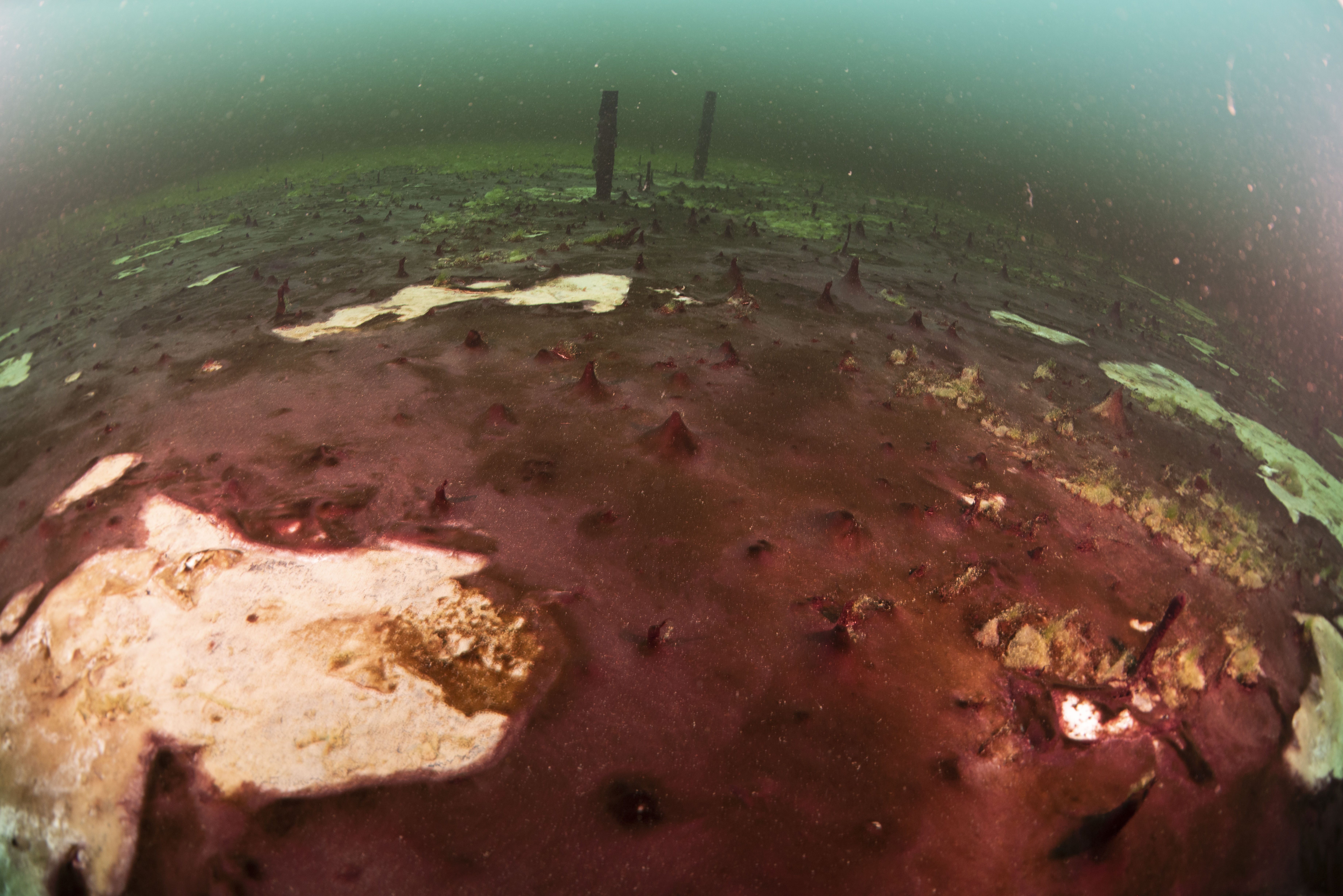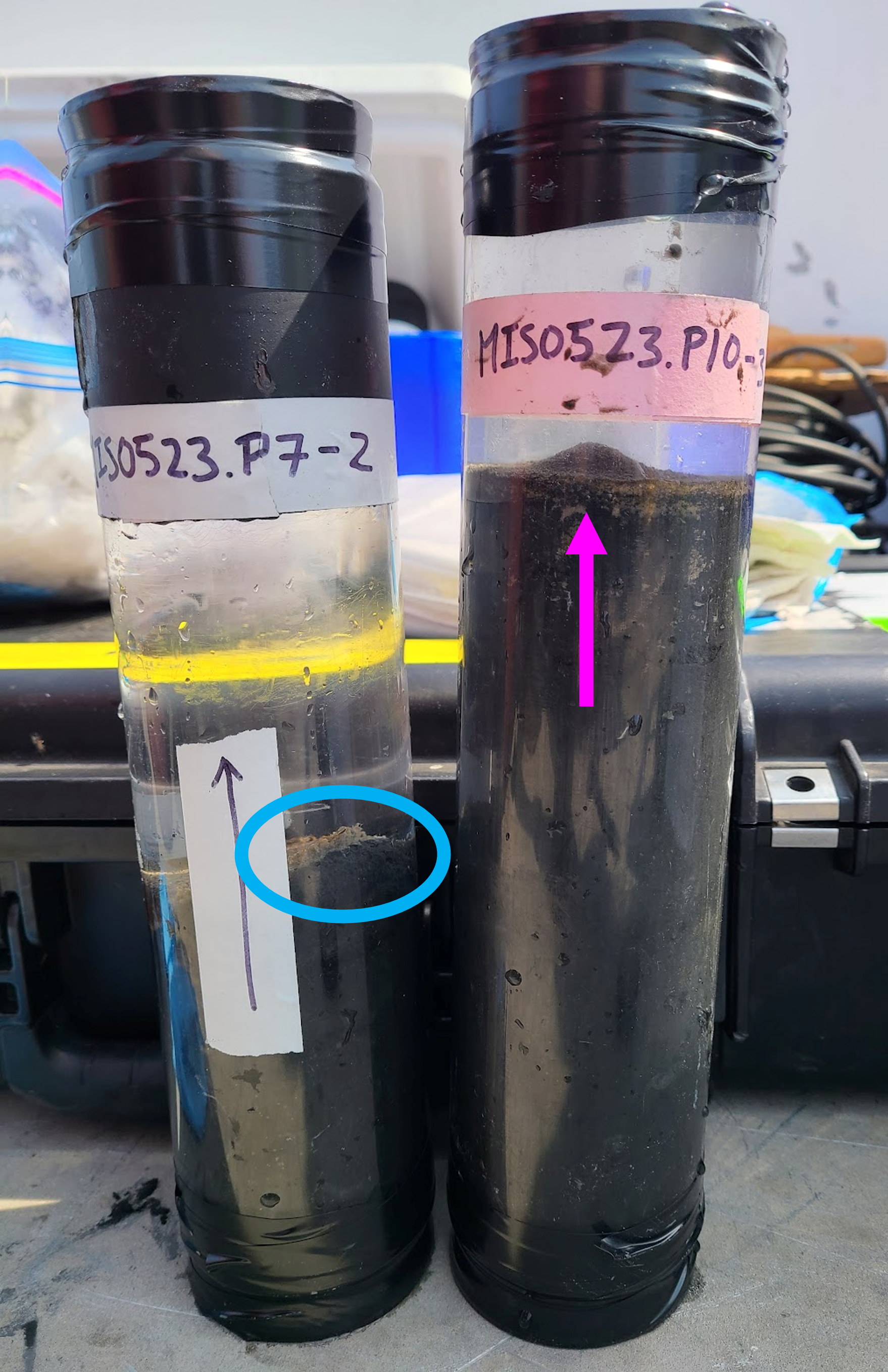
Climate change and lake chemistry
Climate change can lead to widespread and varied effects on lake chemistry and ecosystems, including changes in productivity and oxygenation. In order to understand how low-oxygen lake systems might react to climate change, we are investigating the microbial community and sediment chemistry in Middle Island Sinkhole (MIS), a submerged anoxic karst feature in Lake Huron with extensive microbial mats covering the sediment surface. 
Fig.1. Microbial mats covering the sediment in Middle Island Sinkhole; in places gas-filled “fingers” of mat have developed. Photo credit: NOAA Thunder Bay National Marine Sanctuary.
Preliminary work (presented at the American Geophysical Union Fall Meeting 2022) has found that year-to-year changes in the extent and duration of local ice cover influence carbon burial in MIS sediments by altering productivity in the surface waters.  We are building on previous sediment chemistry data collected over the past decade-plus of sampling at MIS by integrating depth-profiled sediment carbon and nitrogen data, new microbial community taxonomy from 16S sequencing, and local satellite climate data to understand how carbon sequestration and microbial communities are impacted by local interannual climate variations.
We are building on previous sediment chemistry data collected over the past decade-plus of sampling at MIS by integrating depth-profiled sediment carbon and nitrogen data, new microbial community taxonomy from 16S sequencing, and local satellite climate data to understand how carbon sequestration and microbial communities are impacted by local interannual climate variations.
Fig 2. Sediment cores collected from MIS in 2023, the arrow drawn on tape indicates the top of the core. Circled on the left core is fluffy microbial mat that has lifted slightly from the sediment surface. The pink arrow on the right core points to the interface between the mat and the sediment; the bump in the mat is likely a gas bubble lifting the mat in a smaller version of the fingers shown in the first image.
Researchers Involved:



